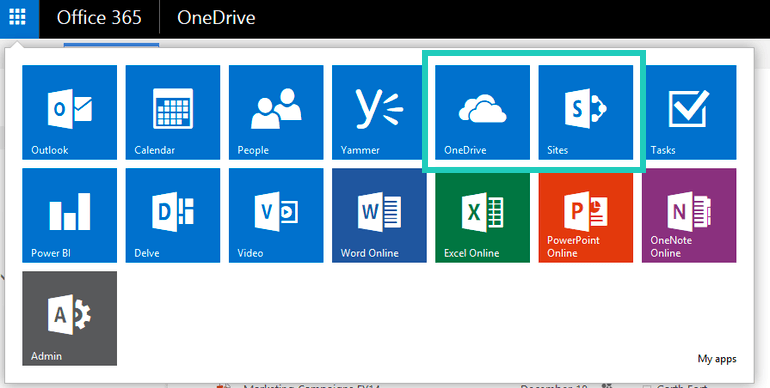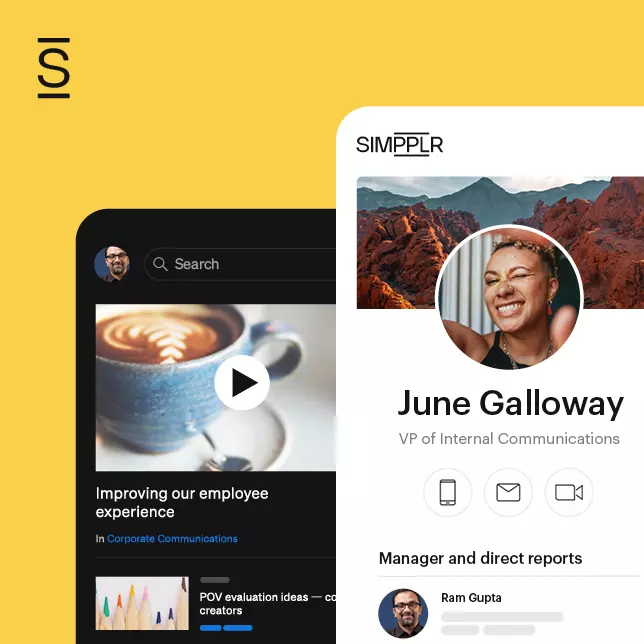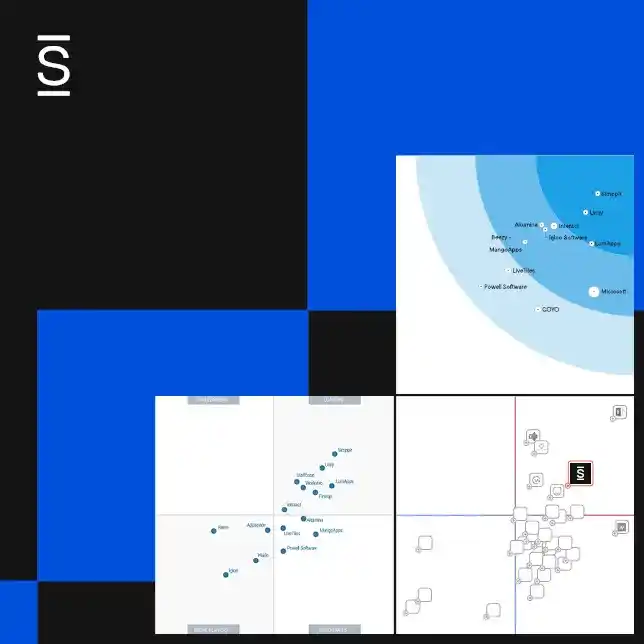Every day our solution consultants get asked why Simpplr is better than SharePoint. And it’s understandable. According to a recent Simpplr Research survey, nearly half of all intranets run on SharePoint. But if we dig deeper, we see that we’re having the wrong conversations.
Rather, SharePoint can be a meaningful compliment to a modern intranet like Simpplr because it often solves different use cases. Instead of discussing differences between our platforms’ features, we often discover that organizations really need to flush out what problems they’re solving for and if they want to build or buy their intranet software.
Related: Explore SharePoint Alternatives
There are different types of intranets and intranet use cases
To frame the discussion, let’s address an elephant in the room: the “intranet” industry is a confusing mess that can mean different things to different people. There are different types of intranets that are built for different people, pains, and processes. For the sake of illustration, let’s separate the two generally prevailing perspectives:
Intranets for IT Professionals
IT’s charter and challenges
The IT department is the technology enablers of the organization. Their focus is on using technology to make employees more productive. IT is constantly evaluated on the company’s app portfolio and its associated usage. The original intranets (built by IT over 25 years ago) emphasized knowledge management and networking components. Hence the term, intranet.
What IT wants in an intranet:
- The intranet should serve as a single source of truth for all documents and knowledge
- Ideally, it connects to the rest of the digital workplace and serves as a storefront for other apps (because intranets can help drive adoption of other apps, too)
- The ROI argument, like most things IT, is productivity: “It should be easy for employees to find stuff”
Intranets for Internal Communication
Internal Communications’ charter and challenges
The Internal Communications group are the internal marketers of the organization. They’re tasked with driving employee engagement and keeping everyone aligned with the company strategy. In many organizations, internal communication is often overlooked. So many in this role struggle to get organizational support, leadership engagement, and employee participation. Thus, initiatives lose momentum. They’re oftentimes accountable for intranets they didn’t choose and almost uniformly dislike SharePoint because it’s hard to administer.
What Internal Communication wants in an intranet
- It should be more than knowledge management. At Simpplr, we’ve coined the term “virtual headquarters” to explain the purpose of an intranet. It’s a place where all employees go to connect with coworkers and engage as a community across physical locations and departments, build culture reaffirming the company’s purpose, align with leaders on strategy, and find trusted/curated information. That way employees can feel included, stay in the know, find help, and connect with their coworkers.
- The intranet should be more of a news app than a document repository.
- The intranet needs to be easy for Internal Communications to directly administer because they can’t move fast enough with IT dependencies. This is required to create a vibrant community that evokes the virtual headquarters.
- Experience matters: The community is a reflection of the employer brand, so ideally the intranet needs to be inviting, addictive, and intuitive.
Knowledge Intranets vs. Engagement Intranets
The separate perspectives and pains force us to realize that both personas have a different understanding of what an intranet and its goals should be. Generally speaking, the IT and Internal Communication personas are asking for two completely different “intranets”:
Knowledge Intranets
These are centered around knowledge management and systems discovery. More often than not, this is how IT envisions an intranet: The single source of truth for critical documentation.
Engagement Intranets
These are centered more around Internal Communication’s use cases. They are vibrant, social, and news-heavy. The emphasis is on communications and culture above documentation.
Both use cases are real. Both perspectives are valid. Both pains deserve to be met. Clearly, the SharePoint approach has a strong history as a knowledge intranet but has been a poor engagement intranet. This isn’t entirely on the software and its capabilities, a lot of it is due to poor organizational design. When you step back, it’s silly to expect IT to drive a company’s engagement strategy. That’s not their job. But it’s reasonable to ask them to simplify document management and file storage. A knowledge intranet, like SharePoint, was built for this. According to Simpplr Research, lack of clarity and purpose is a primary reason intranets fail. It’s not hard to understand why when organizations often muddle these concepts.
We’re having the wrong conversation. It should be a discussion of build vs. buy.
SharePoint is a platform technology whereas technologies like Simpplr are prepackaged, purpose-built intranets (or what Gartner calls Intranet as a Service). It’s important to understand the distinction because rather than deciding one technology (with its associated features) over the other, the discussion really becomes a build vs. buy conversation. SharePoint intranets don’t simply work out of the box, they need to be built and configured with technical resources much like other platform technologies such as Google Sites. To add to the confusion, there are many IT professionals that believe that SharePoint can be configured to serve an engagement intranet’s needs.
Unless the organization has truly unique needs that can’t be met any other way, there is a lot of data and evidence that shows configuring platform technology like SharePoint is usually too costly and ineffective for engagement intranets:
- SharePoint provides a toolkit but still needs to be assembled (just like other platforms such as Google Sites or Confluence)
- They aren’t optimized for usability, design, and the engagement use cases referenced above. Plus, IT departments typically have technical skills but lack usability and design experts.
- They take a long time to get off the ground. Some sources say an average of 1.2 years to deploy.
- They historically need to be maintained by technical resources who have been certified in SharePoint-specific configuration. This creates maintenance complexity, makes the intranet’s total cost of ownership (TCO) skyrocket because you have to staff expensive technical resources, and often slowing the business down because it forces IT to be part of workflows.
- Since most implementations are heavily customized, they can’t be easily upgraded or leverage new features
- The mythical everything hub that many IT professionals aspire to build is a flawed undertaking. Employees don’t need universal access to all information. It creates more confusion. Employees need access to refined trusted, curated information.
- Most importantly, they’re rarely built to serve employee engagement use cases. Even Microsoft markets SharePoint directly as a tool for configurable “sites” that is distinct from OneDrive which has emerged as their cloud-based file management platform. This is important because it shows how disconnected all of these modules really are and that a considerable amount of configuration is needed to map to and build workflows for the engagement use case.

For a more detailed analysis of the build vs. buy conversation,see our blog post.
SharePoint and modern intranets should coexist (not compete)
Engagement Intranets should integrate with SharePoint (and broader Office 365 integration). Simpplr actually has more integration breadth across SharePoint and other peripheral Microsoft products than any other technology stack. And rightfully so. Microsoft continues to be used in essentially all organizations. Any intranet will need deep integrations to succeed in an Office 365 shop.
Let’s take Simpplr’s Microsoft integrations as an example:
OneDrive
OneDrive is Microsoft’s answer to Box, Dropbox, and Google Drive. It provides online file storage and provides a gateway to update and collaborate on O365 documents (i.e., cloud versions of Word, Powerpoint, etc.). Not only does Simpplr integrate with these platforms, but we also encourage its use. Here’s why: Many intranets fail when they become overrun with stale, outdated versions of content. Sure you can upload documents directly into Simpplr, but it’s much better to house your policies and documents in a cloud-based content management system that integrates with Simpplr. That way if the document gets updated, the intranet is automatically up to date. Nobody needs to upload and replace the document.
SharePoint Sites
Microsoft is blurring the lines between SharePoint Online and OneDrive. Thus, many of the concepts are the same as above. But if organizations have tied content folders to SharePoint sites, Simpplr will integrate with these folders so migration isn’t necessary.
Microsoft Teams
Teams is Microsoft’s group chat software that is akin to Slack. To expand the reach of internal communications, Simpplr provides many means to promote company news across multiple channels. Teams is one of them.
Active Directory
This is the plumbing that manages user identities, roles, and single sign-on. It allows network administrators to create and manage domains, users, and objects within a network. Playing nice with single sign-on providers and identity management solutions is table stakes for any enterprise software application.
Skype
Since Simpplr is built to connect employees, we have a very strong people directory module. We want employees to find and connect with coworkers and experts easily. So Skype is just an extension of other contact information. Users can Skype coworkers with one click.
Conclusion: Simpplr and SharePoint
Hopefully, this helps round out Simpplr’s role within the context of SharePoint. If it helps, take a look at our 3-minute overview demo and compare it to your experience with SharePoint. You’ll soon notice these are completely different beasts.

















